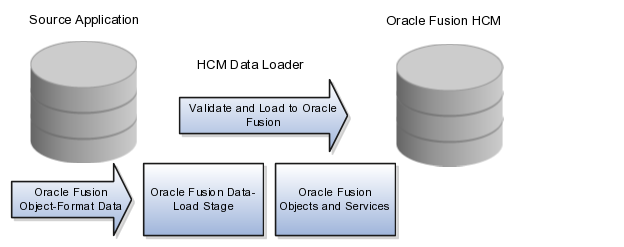Integration with Oracle Cloud HCM
Gepubliceerd: Auteur: Stefan van Glabbeek Categorie: OracleOracle plans to release version 9 of Fusion Applications this spring. The company made a lot of changes to Cloud HCM since version 8, with the biggest improvements in the integration part. One of the core aspects of integration is still file-based integration, in which lots of improvements could be made.
There are many features already implemented in Fusion HCM. For instance, you can upload spreadsheets with the spreadsheet loader in Fusion HCM, and CSV-files with FBL (File Based Loader). It’s possible to extract data with HCM extracts and BI-publisher, schedule uploads with FBL, or trigger them via messaging. What was missing however, was a way to automate the file-transfer, which should precede the FBL upload.

With version 9, Oracle introduces HCM connect. This integration tool finally allows developers to write automatic file-transfers which is a huge step towards integrating applications. A big advantage in particular for European organizations, which are typically complex due to the fact they often run applications from lots of different vendors.
All these applications have to be able to work together, and the exchange of files between different applications is a very important part in this. With version 9, this finally can be implemented. Thus making it possible to take care of completely scheduled interfacing and batch processing.
Another big improvement in version 9 is the release of a big number of webservices, which can be connected to from the outside. You can look up the WSDL in the Oracle Enterprise Repository (OER) and find instructions on how to connect to these webservices. This makes it possible to connect to Oracle Cloud HCM via Oracle Service Bus and/or Oracle SOA Suite.
You can also arrange your own co-existence in this way. In Oracle EBS, you can use APEX to create simple end-to-end messaging directly to Fusion HCM Cloud. Or you could use the PL/SQL package procedure utl_http.request. You can create end-to-end messaging with the Integration Broker in PeopleSoft. This way, you’re able to create your own new version of HR to HR.
I do recommend using the Oracle Service Bus and/or SOA Suite in between. This way, the different connected applications are independent from each other. As a result, changes in one application do not necessarily affect the other applications.
Many European companies have not started using Fusion Cloud HCM as of yet, mainly because of the lack of integration options. With the release of version 9 however, I think that the product is mature enough to make the jump.
There are many features already implemented in Fusion HCM. For instance, you can upload spreadsheets with the spreadsheet loader in Fusion HCM, and CSV-files with FBL (File Based Loader). It’s possible to extract data with HCM extracts and BI-publisher, schedule uploads with FBL, or trigger them via messaging. What was missing however, was a way to automate the file-transfer, which should precede the FBL upload.

With version 9, Oracle introduces HCM connect. This integration tool finally allows developers to write automatic file-transfers which is a huge step towards integrating applications. A big advantage in particular for European organizations, which are typically complex due to the fact they often run applications from lots of different vendors.
All these applications have to be able to work together, and the exchange of files between different applications is a very important part in this. With version 9, this finally can be implemented. Thus making it possible to take care of completely scheduled interfacing and batch processing.
Another big improvement in version 9 is the release of a big number of webservices, which can be connected to from the outside. You can look up the WSDL in the Oracle Enterprise Repository (OER) and find instructions on how to connect to these webservices. This makes it possible to connect to Oracle Cloud HCM via Oracle Service Bus and/or Oracle SOA Suite.
You can also arrange your own co-existence in this way. In Oracle EBS, you can use APEX to create simple end-to-end messaging directly to Fusion HCM Cloud. Or you could use the PL/SQL package procedure utl_http.request. You can create end-to-end messaging with the Integration Broker in PeopleSoft. This way, you’re able to create your own new version of HR to HR.
I do recommend using the Oracle Service Bus and/or SOA Suite in between. This way, the different connected applications are independent from each other. As a result, changes in one application do not necessarily affect the other applications.
Many European companies have not started using Fusion Cloud HCM as of yet, mainly because of the lack of integration options. With the release of version 9 however, I think that the product is mature enough to make the jump.





Nice article, what are the current updates as of now in 2017 wrt integration with fusion HCM ?
Also, how is the market out there for companies adopting Oracle HCM fusion?